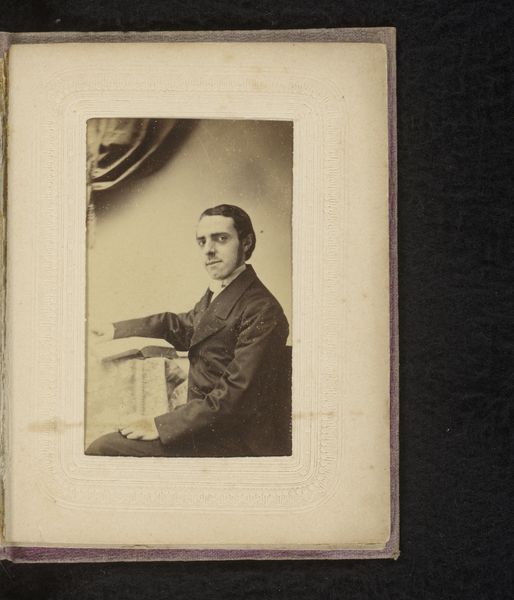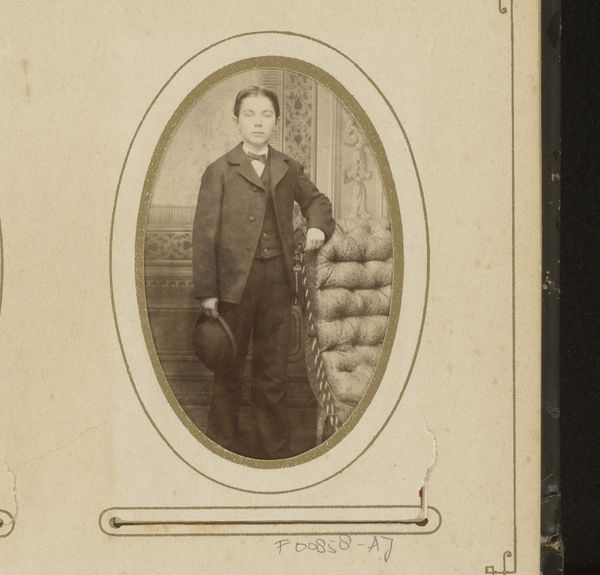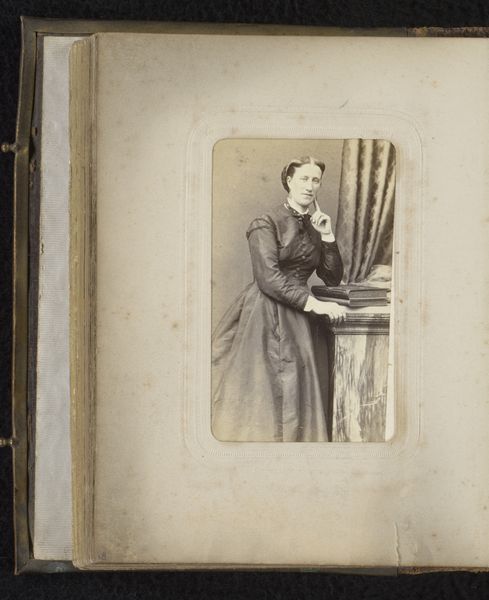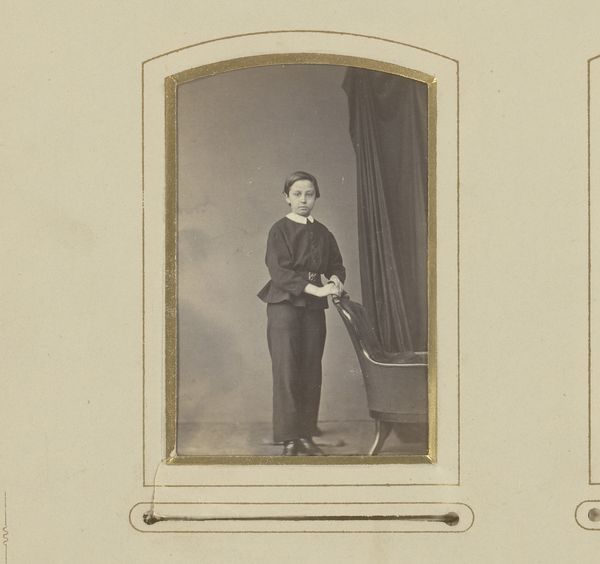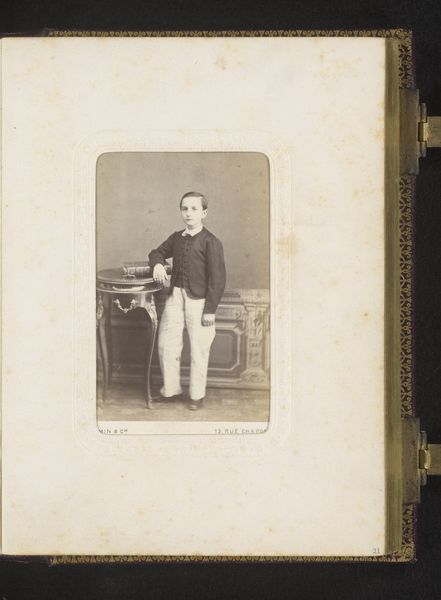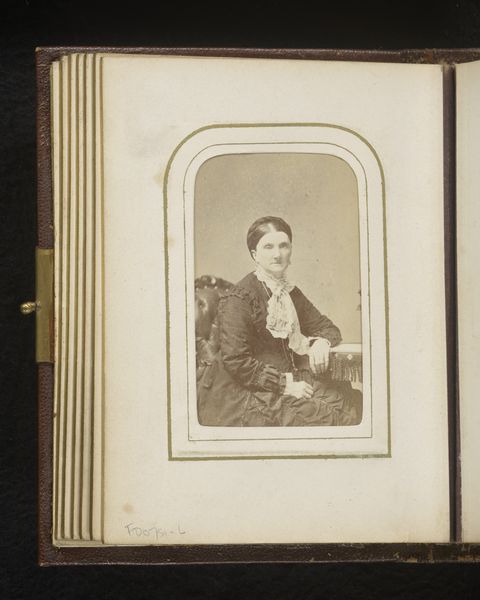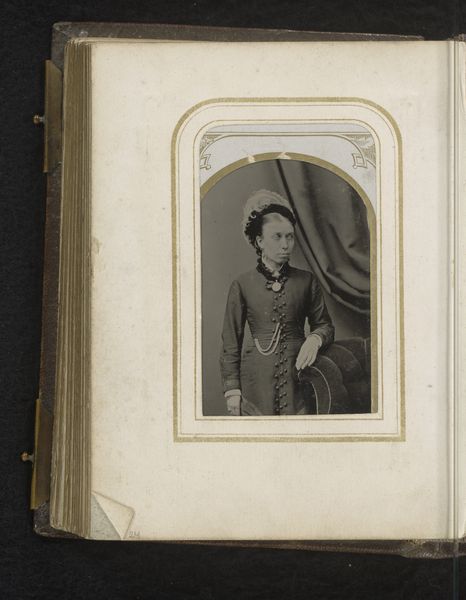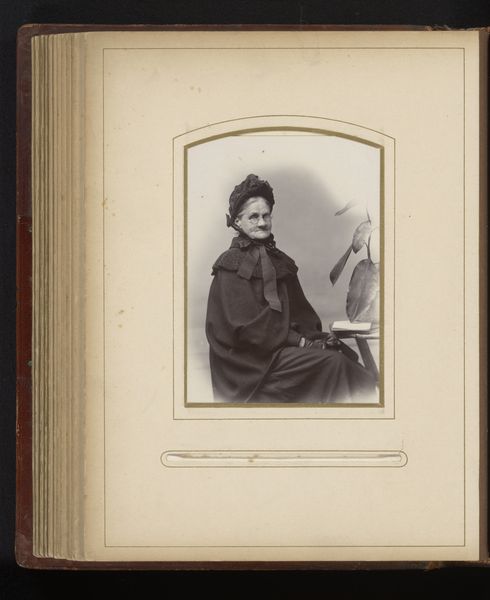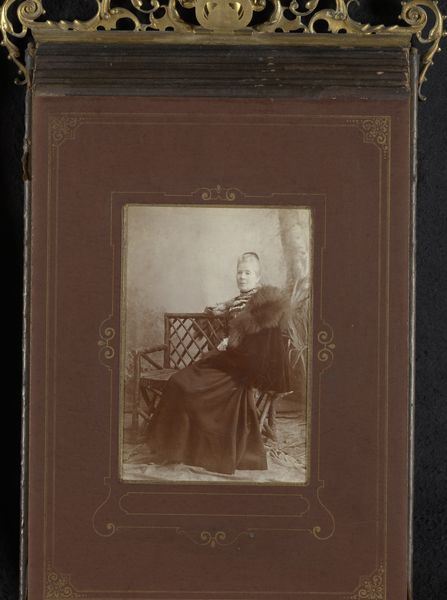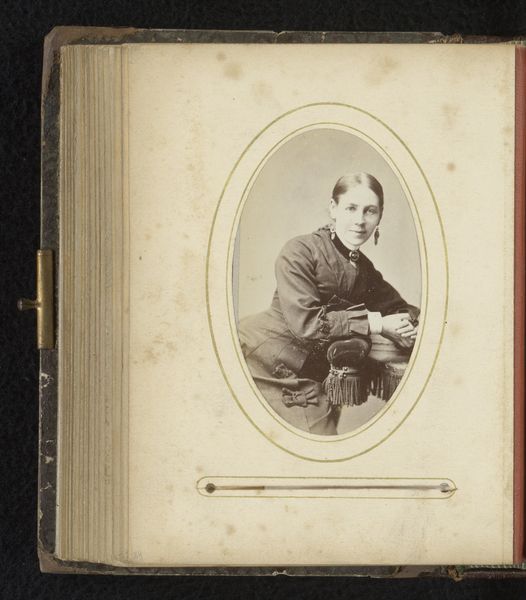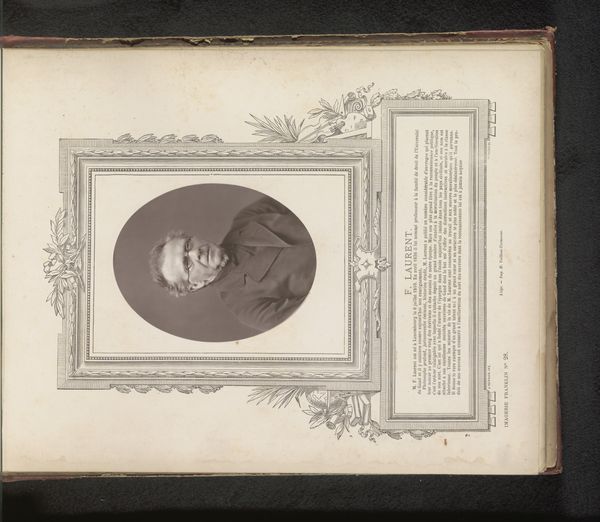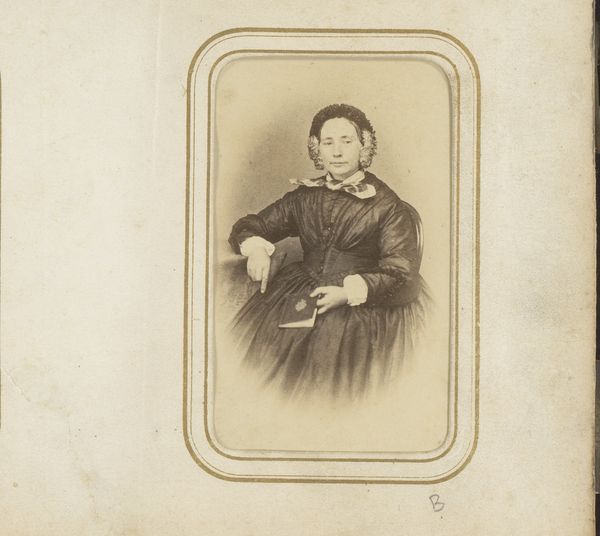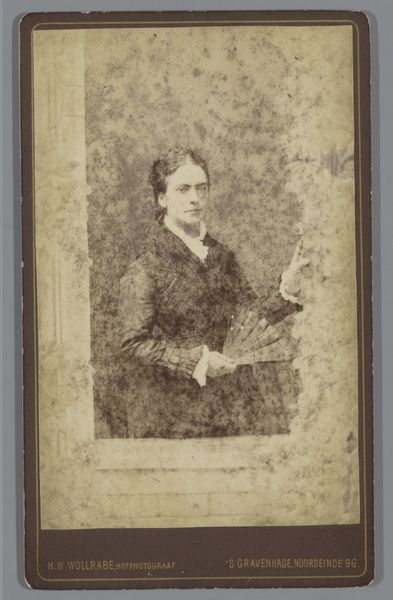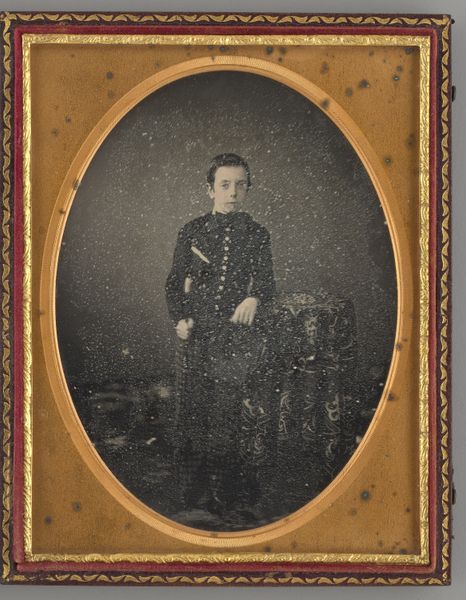
daguerreotype, photography
#
portrait
#
16_19th-century
#
daguerreotype
#
photography
#
men
#
united-states
Dimensions: 8.1 × 6.9 cm (3 1/4 × 2 3/4 in., plate); 9.2 × 16 × 1 cm (open case); 9.2 × 8 × 1.6 cm (case)
Copyright: Public Domain
Curator: This daguerreotype, created around 1845, presents an anonymous seated man in profile, held here at The Art Institute of Chicago. What strikes you first about this piece? Editor: The intensity. The dark tonality against the almost sculptural quality of the face and collar really draws my eye. And it's all contained in this incredible frame. The octagonal shape lends a kind of architectural compression to the already tight composition. Curator: Indeed. Early photography in America was shaped by several social forces. One of the foremost was the rapidly democratizing market, where middle-class aspirations drove a boom in portraiture. These images allowed ordinary citizens to engage in practices formerly exclusive to the wealthy. Editor: And look at the arrangement. The sitter’s profile against the flat dark background establishes a powerful graphic dynamic. The details are incredible – the folds of the man’s jacket, the textured surface upon which he rests his hands. It has this beautiful formal tension, as though the image were both representational and deeply abstract. Curator: Exactly. Daguerreotypes such as this one became key social tools that reinforced identity. Family connections, commercial stature, or cultural affinity – the subject communicates these factors in ways easily legible to contemporaries. One wonders, who was he hoping to impress? Editor: The formality seems almost defiant, considering how technically innovative photography still was at the time. There’s a beautiful stoicism to this individual that translates through time, even across such radical changes in technology and representation. Curator: You're right. Despite its innovative qualities, the portrait’s deliberate pose references older conventions. By understanding the cultural role of photography at that moment, we appreciate that this image captures someone crafting his public persona through this nascent technology. Editor: Agreed. Examining its sharp contrast between light and dark really enhances the portrait’s solemn and profound visual experience. Curator: By situating this image historically and noting its visual character, we can understand better the values and identity formation underway in the early republic. Editor: And through its formal elements, the photograph still invites us to consider ideas about image-making, class, and presentation across decades.
Comments
No comments
Be the first to comment and join the conversation on the ultimate creative platform.
